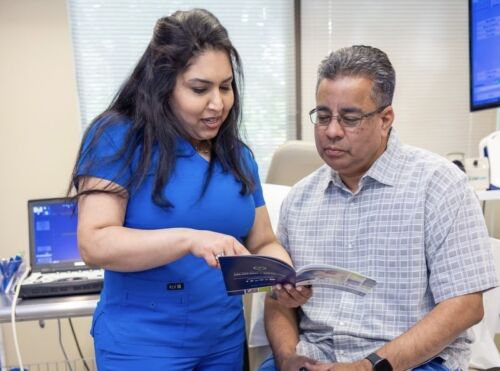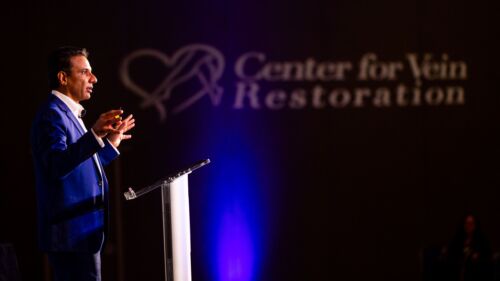Applying quality SPF and avoiding intense sunlight is good for many reasons, but there are better and more permanent ways to eliminate and prevent spider veins from developing.
Do you see thin lines of red, blue, and purple on your face and legs? Those clusters of interlocking veins are most likely telangiectasias, more commonly known as spider veins.
Spider veins are similar to varicose veins in that both conditions are caused primarily by the malfunctioning of blood circulation in the veins. When you spend excessive time in the sun, the intense UV rays may damage the blood vessels and capillaries, so slathering on SPF before you go out into the sun can protect your skin. But, you shouldn’t count on SPF to prevent or get rid of your spider veins, as only a medical procedure performed by a vein health professional can accomplish that.
The link between the sun and your spider veins
We all know excessive sun exposure causes age spots, deep lines, and, in some cases, skin cancer. But did you know that intensive UV light can also indirectly affect your veins?
Collagen is the protein that binds fibrous tissues like ligaments and tendons in the body. It is also what gives your skin and veins their strength. As we age, our levels of collagen drop. But we lose even more collagen when we spend too much time in the sun. This loss not only causes our skin to lose elasticity but also decreases the pressure around our veins, allowing spider veins to become more visible on the skin’s surface.
Treating spider veins
Because spider veins are mainly caused by malfunctioning vein valves that cause blood to pool in the veins, a topical lotion like SPF will not prevent them from forming. Fortunately, there are both minimally invasive surgical techniques and non-invasive methods that can effectively eliminate spider veins:
Sclerotherapy. The gold standard for spider vein treatment, sclerotherapy involves the injection of a saline-based sclerosant solution that irritates the vein walls. The vein walls collapse, and blood diverts to healthier veins. Although virtually painless, most people will require more than one sclerotherapy session to rid all spider veins.
Laser Treatment. Recommended for very thin spider veins that are close to the surface of the skin (including on the face), laser treatments are non-invasive and involve destroying the affected vein with a laser beam.
These outpatient procedures require very little downtime. However, your vein doctor may recommend that you wear compression stockings to promote healthy blood flow in the legs. You’ll also want to avoid excessive sun exposure as you heal.
Let’s eliminate your spider veins today!
Center for Vein Restoration’s accredited offices offer both sclerotherapy and laser procedures, and our doctors can work with you to create tailored treatment plans that suit your individual needs. From the initial consultation to recovery, our vein specialists will guide you through every step of the way. Contact us today for an appointment!

 About Vein Disease
About Vein Disease
 Spider Veins
Spider Veins
 Varicose Veins
Varicose Veins
 Vein Disease Treatments
Vein Disease Treatments
 Treating Spider Veins
Treating Spider Veins
 Treating Varicose Veins
Treating Varicose Veins
 About Us
About Us
 Patient Resources
Patient Resources
 Physician Resources
Physician Resources


